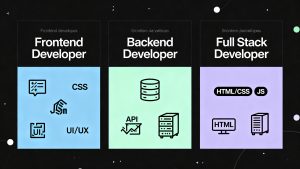Software no longer lives on a single server in a locked room. It runs in public clouds, on mobile phones, inside smart light-bulbs, and across thousands of microservices. Every component talks to the internet, and every integration is a doorway. Security teams cannot defend what they do not understand, so they map the system, look for weak points, and decide what to fix first. That map is the outcome of threat modeling. Whether you are pushing code to a Kubernetes cluster or rolling out a SaaS platform, a clear threat modeling process gives your team a shared view of risk, priorities, and counter-measures.
This article walks through the concepts, the practice, and the tools so that any DevOps engineer can start applying threat modelling in cyber security projects right away:
What is Threat Modeling
Threat modeling is a structured exercise that identifies potential attackers, their goals, and the paths they might use to reach those goals. The discipline grew out of early Microsoft SDL work, yet the idea is much older: architects have always sketched “what could go wrong” before pouring concrete. In software, the outcome is a living document that records assets, trust boundaries, entry points, and security controls. A good model tells you why a flaw matters, not just where the flaw sits. It also assigns a realistic rating to each scenario so teams can weigh effort against payoff.
Modern engineering cycles favour incremental releases, so threat modelling process activities happen in every iteration. At sprint planning you review new user stories. During design you update diagrams. After deployment you capture incident lessons and feed them back. Continuous attention keeps the model accurate even when the stack changes weekly.
Why Threat Modeling is Critical for Security
Vulnerabilities cost most when they escape into production. Threat modeling shifts that discovery left. By spotting a missing authentication check on a new API during design, you avoid a post-release scramble and you protect users immediately. The practice adds value in four ways:
- Shared language across roles – Developers, testers, product owners, and auditors see the same diagram and risk scores. No team operates on assumptions.
- Risk-driven prioritisation – Not every flaw deserves a patch this week. A model ranks issues so effort targets the biggest impact.
- Documented rationale – When regulators ask why a control exists, you point to the scenario and rating rather than offering vague assurances.
- Security by design culture – Embedding analysis early trains engineers to think like adversaries, which improves code quality overall.
For organisations bound by PCI DSS, ISO 27001, or the new EU CRA, auditors increasingly expect evidence of a repeatable threat modeling tool or workflow. Demonstrating that discipline streamlines compliance and reduces review friction.
Key Components of a Threat Model
A complete model answers five questions:
- Assets: What do we care about? Examples: customer PII, payment tokens, uptime of an ordering service.
- Actors: Who might attack? External hackers, rogue insiders, automated bots, or even faulty integrations.
- Entry points: Where can actors interact with the system? REST endpoints, message queues, physical ports.
- Threats: What can go wrong at each entry? SQL injection, credential stuffing, privilege escalation, and so on.
- Mitigations: Which controls block or limit the threat? Rate limiting, strong logging, mutual TLS, signed requests.
Teams often capture this information in a table or through diagram annotations. What matters is consistency: if two squads model the same microservice they should reach similar results.
Common Threat Modeling Methodologies
Before choosing a threat modeling tool you need a method. Methods are rulebooks that guide questions, scoring, and output. Five dominate professional practice:
STRIDE
STRIDE is a mnemonic for Spoofing, Tampering, Repudiation, Information disclosure, Denial of service, and Elevation of privilege. Developed at Microsoft, it pairs naturally with data-flow diagrams. For every data store and process you ask whether any STRIDE category applies. The simplicity helps new teams start quickly, though the checklist can miss nuanced, domain-specific abuse cases.
DREAD
DREAD quantifies risk by scoring Damage, Reproducibility, Exploitability, Affected users, and Discoverability on a numeric scale. You multiply or average the scores to rank threats. Security operations groups like the scoring because it feeds dashboards, but critics note that teams seldom agree on the numbers. Use DREAD when you must justify remediation budgets in a purely quantitative framework.
PASTA
Process for Attack Simulation and Threat Analysis (PASTA) treats modeling as a seven-stage lifecycle, starting with defining business objectives and ending with risk management. It blends attacker profiling, vulnerability discovery, and impact mapping into one flow, making it well suited to heavily regulated industries that need traceability from requirement to control.
Trike
Trike focuses on risk management. You first catalogue assets and acceptable risk levels, then derive threats that exceed those levels. Because the method embeds risk appetite from the start, stakeholders can see which residual risks remain and who has accepted them. The original open-source spreadsheet version still finds use inside small security teams.
VAST
Visual, Agile, and Simple Threat modeling (VAST) emerged to address enterprise scale. It separates application diagrams for developers from infrastructure diagrams for ops, aligns with agile ceremonies, and auto-generates dashboards. Commercial tooling supports VAST out of the box, so large DevOps organisations often adopt it instead of crafting their own workflow.
Each method can be adapted. The important point is to pick one, teach it, and bake it into your definition of done so that new services never skip analysis.
Steps to Perform Threat Modeling
Regardless of methodology, successful teams follow a repeatable path:
- Outline scope – Decide which system, feature, or sprint increment you are modelling. Over-scoping leads to vague analysis, while under-scoping misses cross-boundary issues.
- Create diagrams – Draw data flows or sequence diagrams that mark trust boundaries. Keep layers separate: user interface, API gateway, internal services, third-party calls.
- Identify threats – Apply STRIDE categories, misuse cases, or kill chains to each element. Brainstorm with both engineers and business stakeholders to surface domain-specific angles such as fraudulent refunds or data poisoning.
- Rate risk – Use DREAD, qualitative High/Medium/Low, or whatever your policy specifies. Tie the rating to both likelihood and impact so numbers have real meaning.
- Design mitigations – Map counter-measures to each high or medium threat. Examples: parameterised queries, JWT audience validation, circuit breakers, or runbook updates.
- Validate – Run a white-box penetration test or code review to confirm assumptions. Feed lessons back into the model.
- Maintain – Attach the model to the repository and revisit it at each architectural change. Automate reminders inside your CI pipeline so updates never rely on memory.
Following this seven-step threat modelling process keeps documentation fresh and actionable. Many teams store the model in Markdown alongside the code so pull requests trigger peer review.
Tools and Resources for Threat Modeling
A spreadsheet can work for the first few services, but growth demands automation. The current landscape includes both open-source and commercial options.
- Microsoft Threat Modeling Tool – Free Windows desktop application aligned with STRIDE. Drag-and-drop elements, generate reports, and export to Visio. Perfect for smaller teams that want a quick start.
- IriusRisk – Web platform that supports VAST, STRIDE, and custom libraries. It integrates with Jira, Jenkins, and scanner APIs, turning the model into living backlog items. The community edition covers basic needs, while the enterprise tier adds automatic rule packs.
- ThreatModeler – Focuses on large organisations and VAST flows. It pulls cloud architecture templates from AWS or Azure and auto-populates typical controls, reducing manual effort.
- OWASP Threat Dragon – Open-source, cross-platform tool that runs as a PWA or desktop app. It encourages data-flow diagrams and stores JSON models in Git. Ideal for DevOps pipelines that value transparency.
- SecuriCAD – Uses probabilistic attack simulations to test mitigations virtually before rollout. Helpful when an environment cannot host red-team exercises.
- Graphviz and Markdown – For engineers who prefer code to GUIs, plain-text diagrams backed by Git provide version history and diff reviews at almost zero cost.
When selecting a threat modeling tool, check export formats, multi-user support, and ease of CI integration. A tool that lives outside the developer workflow will soon gather dust.
Challenges and Best Practices
Threat modelling in cyber security looks easy on a whiteboard, yet real projects reveal weak spots fast. Knowing where teams stumble and how to move past those snags keeps the work useful instead of ceremonial.
Common Hurdles
Even well-funded security programs stumble over the same four issues. Spotting them early lets you put fixes in place before frustration sets in.
- Perceived overhead – Teams fear extra meetings. Solve this by time-boxing sessions to one hour per sprint and showing how early fixes cut future work.
- Inconsistent scoring – Without clear criteria, a “High” from one squad is “Low” for another. Publish a short rubric with concrete examples so ratings converge.
- Stale diagrams – Architecture drifts fast. Embed model update tasks into the definition of done and trigger automated reminders after Terraform changes.
- Tool fatigue – A security portal separate from the backlog dies from lack of traffic. Integrate directly with Jira or GitHub issues so failures surface where engineers already live.
Best Practices
The habits below help teams clear those hurdles and make threat modeling a natural part of continuous delivery.
- Start small and iterate – Model a single microservice first. Demonstrate value, then expand.
- Use real incidents as test cases – After an outage, ask whether the model predicted that path. If not, improve the process.
- Train with red-team drills – Running a tabletop exercise cements the habit of thinking like an attacker.
- Automate evidence collection – Link model IDs to code commits, scanner results, and pull-request templates so auditors trace each control back to its threat.
- Champion ownership – Rotate the role of modelling facilitator so knowledge spreads and no single person becomes a bottleneck.
A mature threat modelling in cyber security discipline transforms security from a gatekeeper to an engineering partner. The payoff appears in faster audits, lower patch counts, and, most importantly, fewer production incidents.
Conclusion
Threat modeling turns scattered worries into a clear map of assets, entry points, attacker goals, and defensive measures. When that map lives in the same repository as the code and updates with every change, security shifts from last-minute panic to quiet confidence. Pick one method, back it with a tool that fits your pipeline, refresh the model every sprint, and you will ship software that stands up to real-world attacks while keeping audits painless.



